Surviving the suburbs

We all delight in seeing a col-ourful sunbird flit into our garden to visit some flowers, especially when one of the shyer species comes through. Have you thought about why some sunbirds are common in gardens while others are so rare? And whether they will disappear as urban development increases?
These questions are important to us if we are to enjoy the presence of sunbirds and other nectarivorous birds in our gardens. But the questions are far more important to plants, because nectar-feeding birds pollinate specific plants, enabling them to produce seeds. This mutual relationship fosters plants dependent on the birds, while the birds in turn rely on the plants for food.
As cities grow, they tend to crowd out natural areas, and residential areas are often avoided by birds. If the development of towns and cities means that nectar bearing plants and nectar-feeding birds become isolated in small fragments of natural habitat, both birds and plants will suffer. However, urban areas with gardens can be made less hostile and some brave or adaptable birds will enter and use these new habitats.
Urban environments that allow nectar feeding birds to move between fragments of natural habitats are especially important in the Western Cape, for two reasons. Firstly, Cape Town and the greater Boland suburbs are interwoven with natural fynbos habitat. Secondly, more than 300 fynbos plant species depend on only five specialist nectar-feeding bird pollinator species. Thus, nectar-feeding birds play a uniquely important ecological role in the fynbos biome.
In addition to nectar specialists, there are birds such as weavers, starlings and bulbuls that feed on nectar opportunistically. A different suite of plant species is adapted to pollination by these nectar-opportunists.
This story is from the July/August 2018 edition of African Birdlife.
Start your 7-day Magzter GOLD free trial to access thousands of curated premium stories, and 8,500+ magazines and newspapers.
Already a subscriber ? Sign In
This story is from the July/August 2018 edition of African Birdlife.
Start your 7-day Magzter GOLD free trial to access thousands of curated premium stories, and 8,500+ magazines and newspapers.
Already a subscriber? Sign In
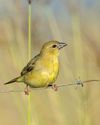
agrochemicals and birds
By the year 2050, it is estimated that 171 million more hectares of agricultural land will be needed to feed a global population of 10 billion people.

arrivals and departures
The Mouse-Free Marion Project is committed to ensuring that breeding seabirds can return to a predator-free Marion Island.
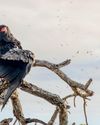
FULL skies
High summer brings high entertainment to Botswana's Mababe Community Concession and Kazuma Pan.
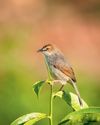
specials IN THE MIST
With a distinct habitat and climate, Zimbabwe's Eastern Highlands are a must-visit destination for any birder wanting to see a bevy of special birds.
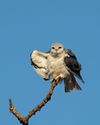
MIDRAND marvel
Gauteng birders don't need to travel far to get their feathery fix. Midway between Johannesburg and Pretoria, Glen Austin Pan has become a favourite patch for this returnee expat.

IN TOO DEEP...again
The annual sardine run along South Africa's east coast is a thrill and a challenge for underwater photographers, especially if you throw birds and inclement weather into the mix.

a journey through the mysteries of moult
As a bird researcher in South Africa’s botanically diverse fynbos biome, I have come to regard bird ringing as part of my journey to understanding moult.
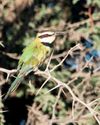
Southern SIGHTINGS
The midsummer period lived up to its reputation as the busiest time for rarities in southern Africa and produced a host of really good records, including several that got twitchers racing all over the subregion to try and add these mega ticks to their lists. As always, none of the records included here have been adjudicated by any of the subregion's Rarities Committees.
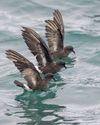
storm petrels in Kalk Bay
According to Roberts 7, both Wilson’s and European storm petrels occasionally seek the shelter of breakwaters during periods of strong onshore winds, but this is seldom observed off South Africa.

power-napping penguins
Periodic reduction in neural activity (sleep) is found in all animals with brains and seems to be essential to restore effective brain function. There is plenty of evidence of the adverse effects of not getting enough sleep, and recent research in humans has identified getting sufficient sleep as one of the four core pillars of living a long and healthy life.